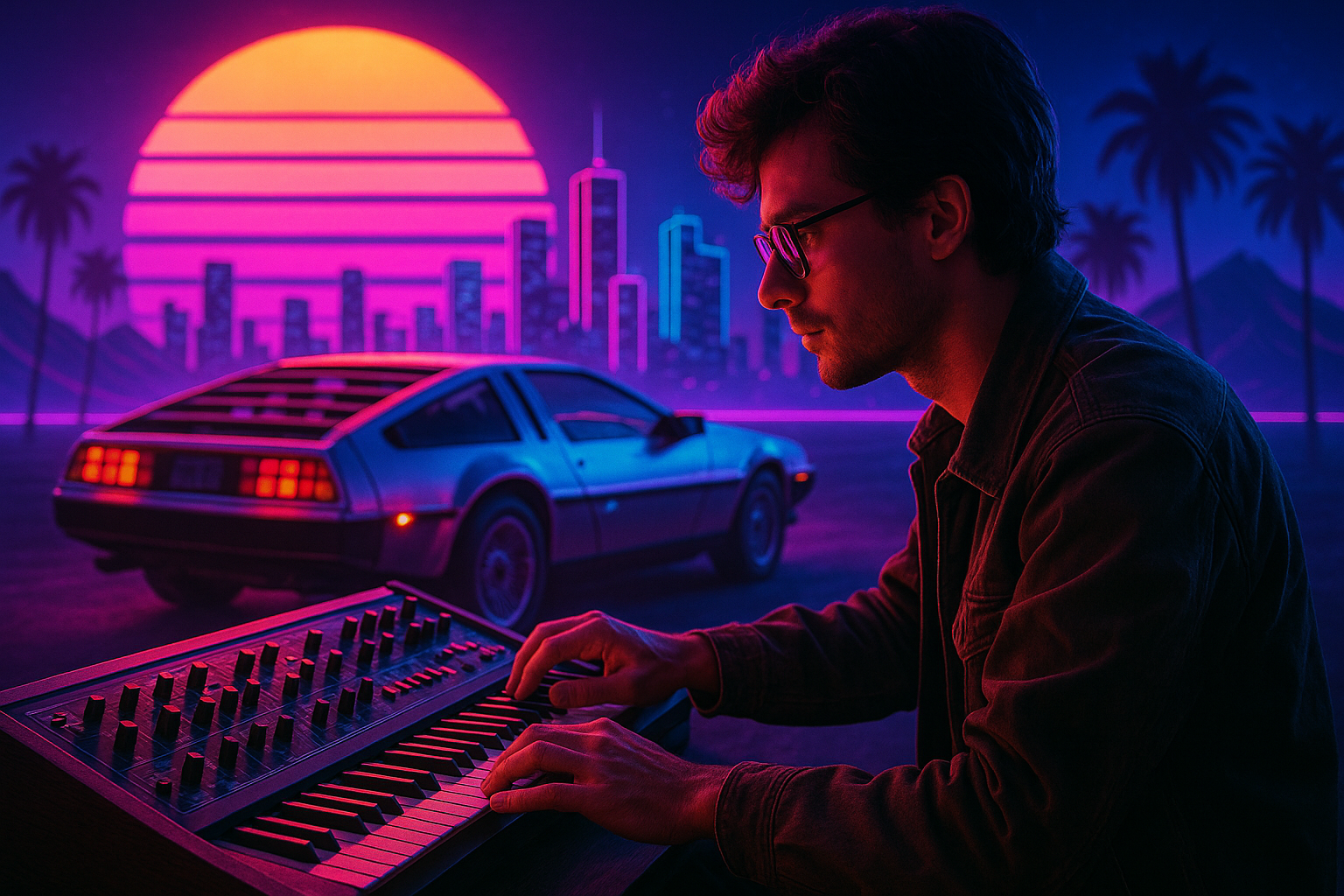"Unraveling the Intricacies of Synthwave: A Modern Tribute to Retro Aesthetics"
The synthwave genre, an unexpected blend of nostalgia and futurism, has been quietly gaining momentum in the contemporary art and entertainment scene. This emerging trend, deeply rooted in the 1980s aesthetic, is redefining music, visual arts, and even the film industry.

Journey Back to the 1980s
Synthwave, also known as retrowave or outrun, is an art and music movement that has its roots in the 1980s. It is characterized by a fascination with the neon-lit nightscape, fast cars, and the futuristic vision of the ’80s. The movement began in the mid-2000s as an underground trend in music, where artists began to draw inspiration from the ’80s culture, synthesizer-infused soundtracks, and video game music.
Synthwave: More than Just Music
While synthwave began in the music industry, it quickly crossed over into the visual arts and film. The genre’s distinctive aesthetics, characterized by neon colors, pixelated graphics, and references to ’80s pop culture, have found a place in digital art, graphic design, and even cinema. Films like “Drive” and “Tron: Legacy” have showcased synthwave aesthetics, both in their soundtracks and visual style.
Synthwave in Today’s Time
Despite being rooted in nostalgia, synthwave is thriving in the modern era. Artists like Kavinsky, Gunship, and Carpenter Brut have brought it to the mainstream, while platforms like Bandcamp and Soundcloud allow indie creators to share their work with a global audience. The genre has also gained recognition in the film industry, with award-winning films like “The Guest” and “It Follows” featuring synthwave soundtracks.
The Cultural Impact of Synthwave
Synthwave’s impact extends beyond entertainment. It’s a reflection of our collective nostalgia for a past era and our fascination with retro-futurism. It speaks to our longing for simpler times, while also embracing a vision of the future that was crafted in the past. Moreover, the DIY ethos inherent in the synthwave scene—where indie artists can create, share, and succeed—echoes the larger cultural shift towards decentralization and democratization in the arts.
The Reception and Significance of Synthwave
Synthwave has been met with enthusiasm by both audiences and critics. Its blend of nostalgia and innovation resonates with listeners, while its distinctive aesthetics have found favor in the visual arts and film industry. Its significance lies in its ability to bridge the past and the future, offering a unique perspective on our cultural trajectory.
In conclusion, synthwave is more than just a genre; it’s a cultural movement that encapsulates our collective nostalgia, our fascination with the future, and our evolving relationship with the arts. As it continues to unfold, it promises to reshape our understanding of artistic expression in the digital age.




